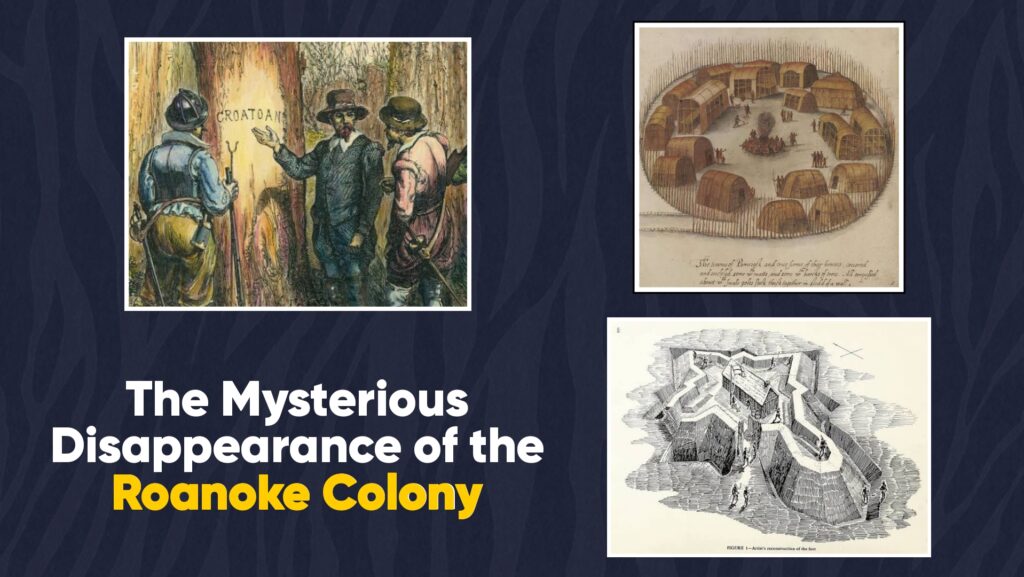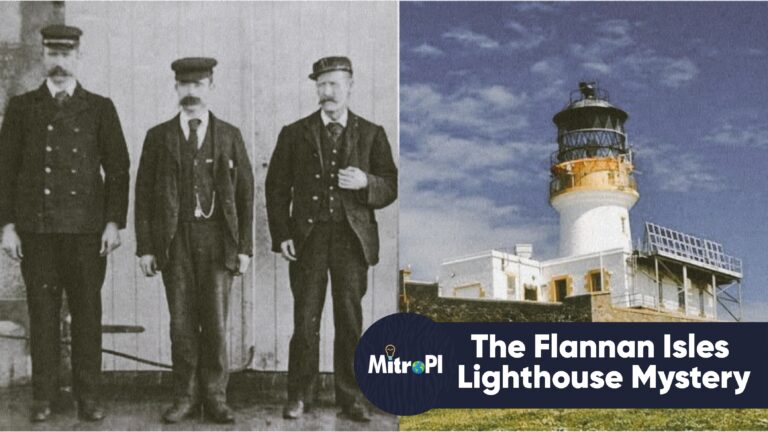In the late 16th century, more than 100 English settlers vanished without a trace from an island off the coast of what is now North Carolina. Known as the Roanoke Colony, their disappearance remains one of America’s oldest historical mysteries. What happened to these men, women, and children? Despite centuries of speculation, no definitive answers have emerged, leaving historians and archaeologists to piece together clues that only deepen the intrigue.

The Founding of Roanoke Colony
The story of Roanoke begins in 1584, when Queen Elizabeth I granted Sir Walter Raleigh a charter to explore and colonize the New World. Raleigh’s goal was to establish a permanent English settlement in North America, challenge Spanish dominance, and expand England’s influence. Two exploratory voyages identified Roanoke Island—located in present-day Dare County, North Carolina—as a suitable site.
In 1587, Raleigh sent a group of 115 settlers, led by Governor John White, to establish the second attempt at a colony there. This group included men, women, and children, making it the first English colony in North America to include families and not just male explorers or soldiers.
Early Days and Challenges
Like any new settlement, the Roanoke Colony faced immediate challenges. Food shortages were a pressing issue, as supplies from England were limited, and the settlers struggled to cultivate crops in the unfamiliar environment.
Relations with the native Algonquian tribes were another significant hurdle. While some indigenous groups initially assisted the settlers, others viewed the newcomers as a threat. Misunderstandings and conflicts often erupted, further jeopardizing the survival of the colony. Combined with the harsh coastal environment, it became clear that Roanoke was vulnerable to many dangers.
John White’s Departure and Return
By late 1587, just months after arriving, the settlers were in dire straits. They urged John White to return to England to gather more supplies. White reluctantly agreed, but upon his arrival in England, he faced delays. The Anglo-Spanish War was raging, and Queen Elizabeth I had claimed nearly every available ship to defend against the Spanish Armada.
It wasn’t until August 1590—three years later—that White returned to Roanoke Island. What he found shocked and baffled him.
The Mysterious Disappearance
When John White finally arrived at Roanoke, there was no sign of the settlers. Their homes and belongings had vanished, leaving little evidence of what had occurred. The only clue: the word “CROATOAN” carved into a wooden post and the letters “CRO” etched into a nearby tree.
White believed “CROATOAN” referred to Croatoan Island (modern-day Hatteras Island), a site 50 miles south of Roanoke. However, poor weather and a shortage of resources prevented White from investigating further, and he returned to England empty-handed and heartbroken. The fate of the Roanoke settlers was never officially resolved.
Theories Behind the Disappearance
For over 400 years, theories about what happened to the Roanoke settlers have abounded. One of the most widely accepted ideas is that they relocated to Croatoan Island and assimilated with the Native American Croatoan tribe. This theory is supported by reports of Native Americans with European features and traditions in the years following the colony’s disappearance.
Another possibility is that the settlers tried to move inland but succumbed to starvation or attacks by hostile tribes. Some experts suggest they were captured or killed by rival groups like the Powhatans. Others speculate that disease wiped them out before they could establish a safe haven.
There’s also the theory that they made an attempt to return to England but were lost at sea. Regardless of which theory one subscribes to, none fully explains all the mysteries surrounding the colony.
Evidence and Speculation
Archaeologists have spent decades uncovering artifacts both on Roanoke Island and on nearby Hatteras Island. Items like pottery, tools, and European objects have fueled speculation about the settlers’ fate. However, many findings remain inconclusive, as they could be linked to later settlements or trade rather than the original colonists.
Oral histories and tribal records from Native Americans in the area have also been analyzed, but they offer conflicting accounts. Some suggest integration with local tribes, while others imply the settlers met a violent end. Despite the evidence, the mystery remains frustratingly unsolved.
The Enduring Mystery and Its Legacy
The story of the Roanoke Colony continues to captivate historians and the public alike. Why? Because it speaks to the human condition—the fear of the unknown, the fragility of our plans, and the enduring desire for answers.
Modern-Day Investigations
In recent years, advanced technology has provided new tools for researchers. Ground-penetrating radar and DNA analysis are being used to examine soil samples, artifacts, and even possible descendants of the settlers. Some archaeologists believe they might be closer to uncovering the truth than ever before, while others argue that key evidence may remain lost to time.
Cultural Significance
The mystery of the Lost Colony has inspired countless works of fiction, films, and even television shows. It’s often portrayed as an example of early settlers’ resilience—and the dangers they faced in an untamed land. Stories about Roanoke also reflect larger themes in American history, including the complex relationships between colonists and Native Americans.
Popular culture has embraced the unsolved nature of the Roanoke story, using it as a foundation for ghost stories, horror films, and even conspiracy theories. Its lasting impact reminds us of how history shapes our collective imagination.
Conclusion
The disappearance of the Roanoke Colony is not just a story of a lost settlement—it’s a story about humanity’s search for understanding. Despite advancements in science and archaeology, we may never fully know what happened to those settlers. Yet, the mystery endures, sparking curiosity and inspiring generations to probe deeper into the past. Perhaps the lasting lesson of Roanoke isn’t just about solving a puzzle but appreciating the enduring allure of the unknown.




